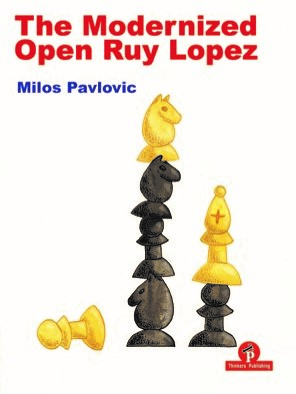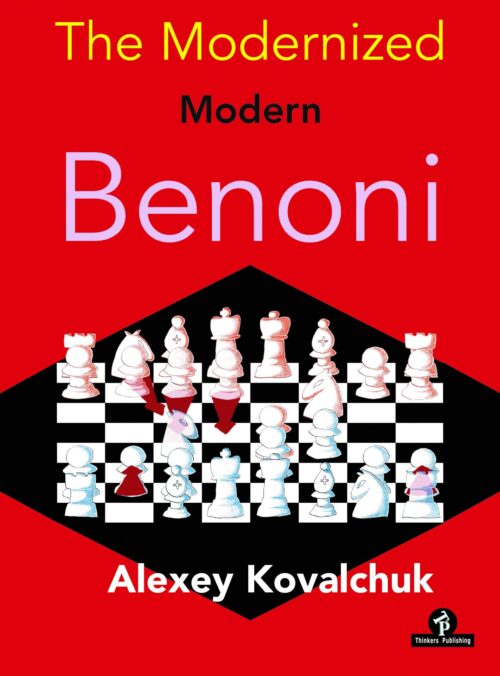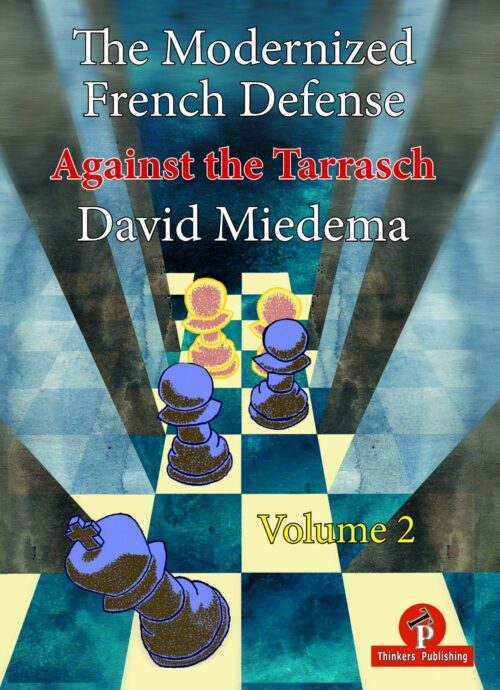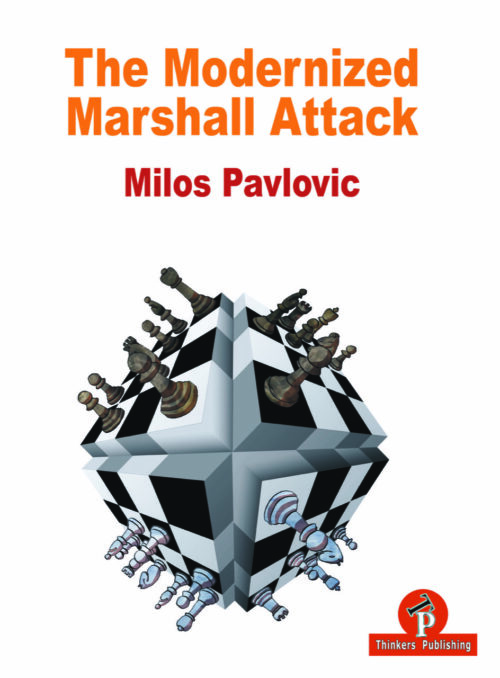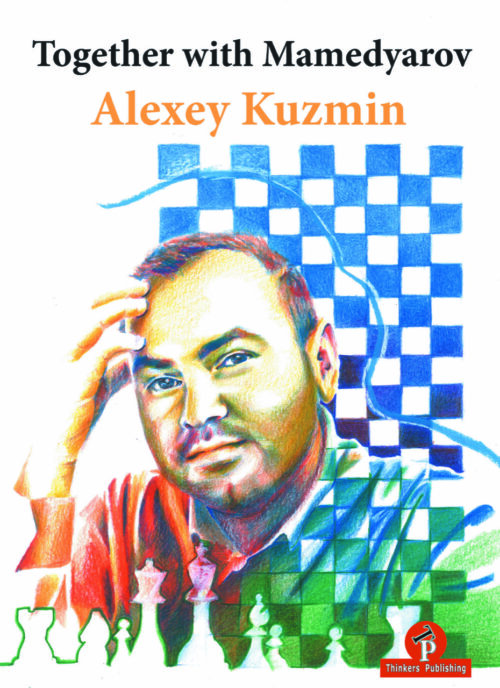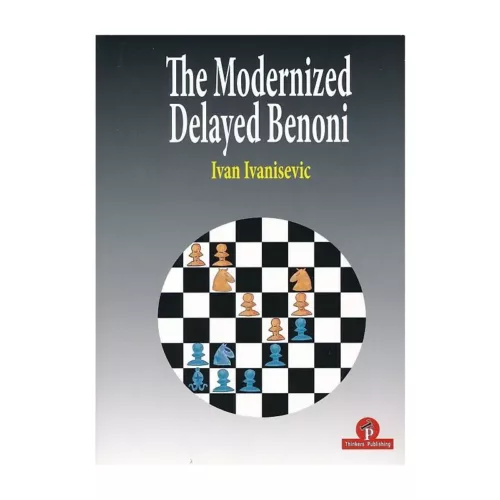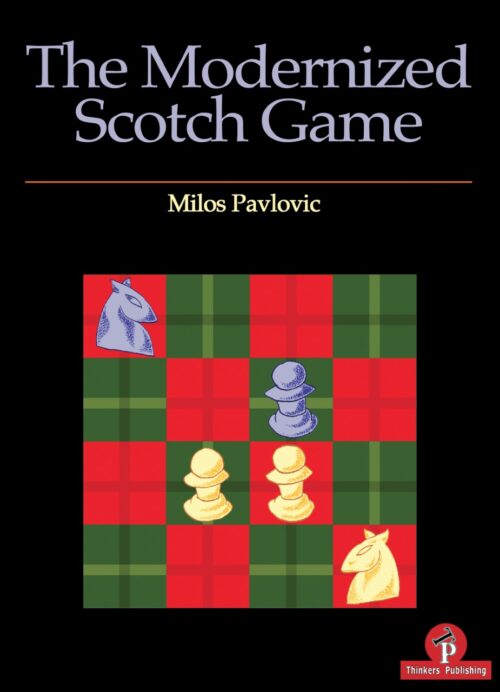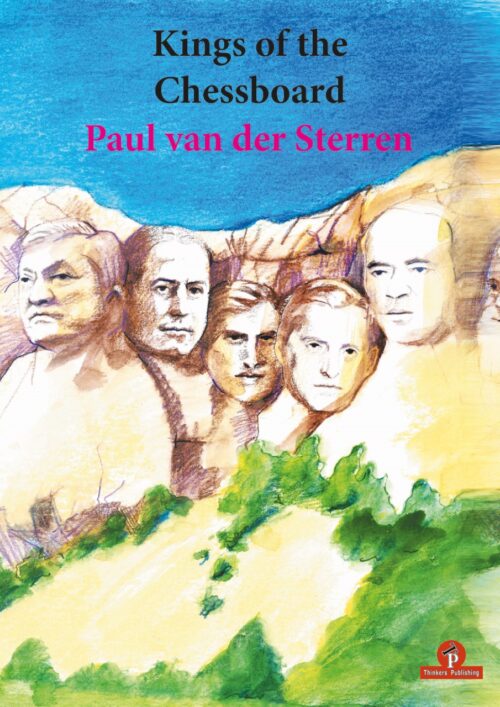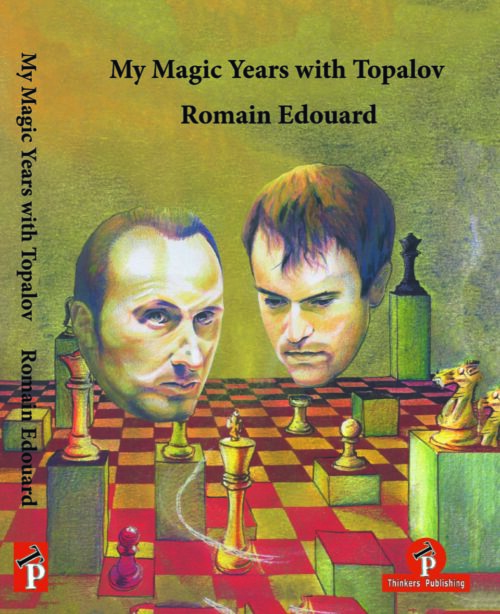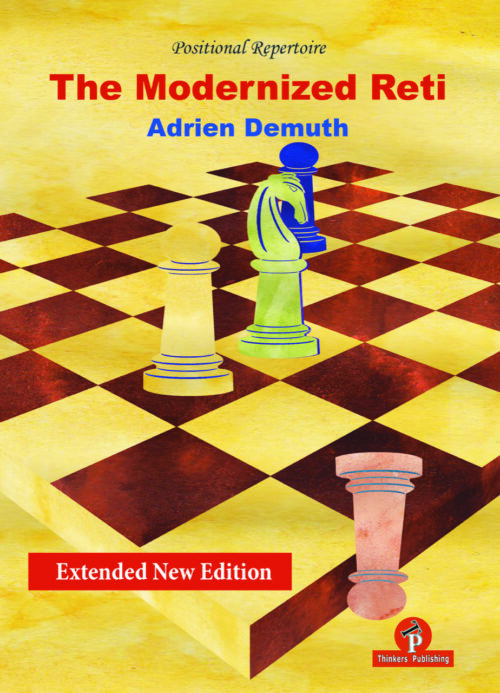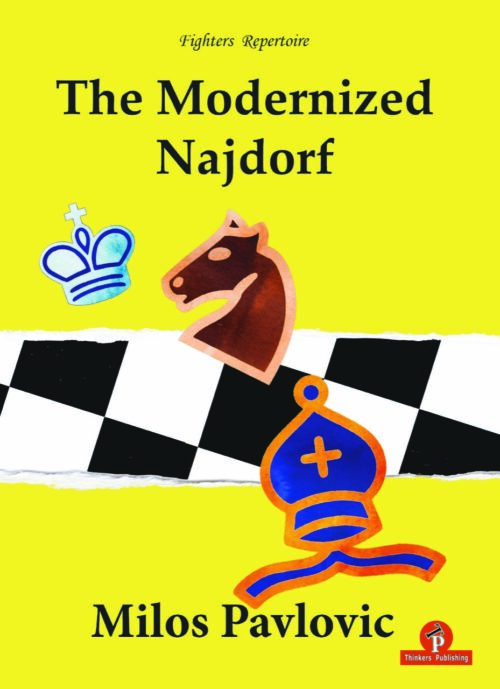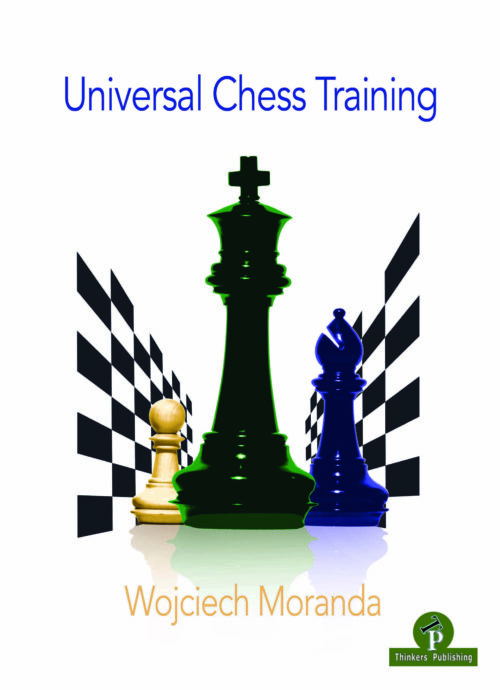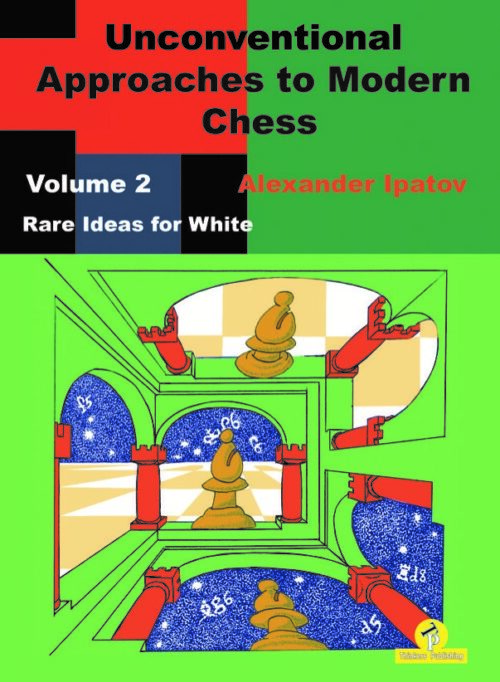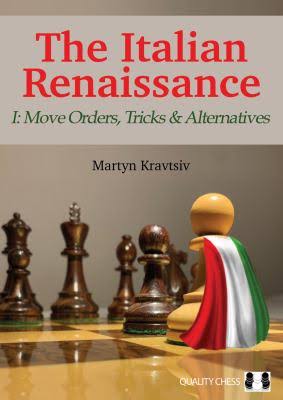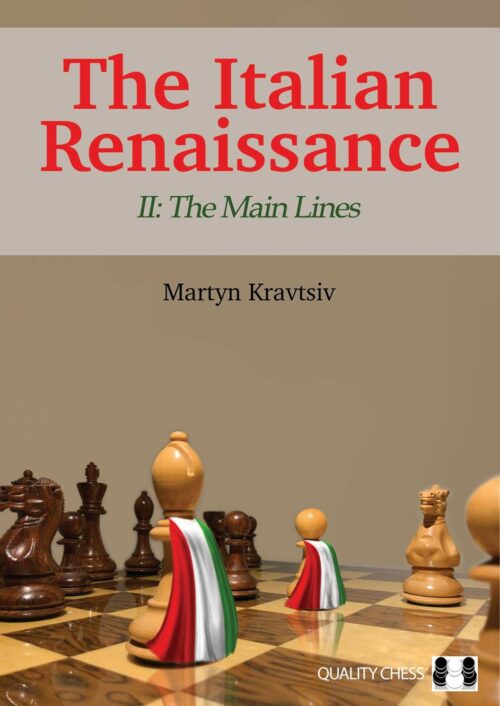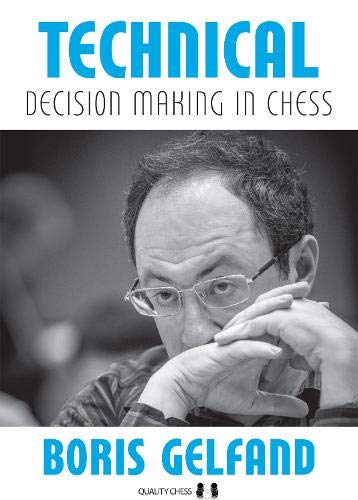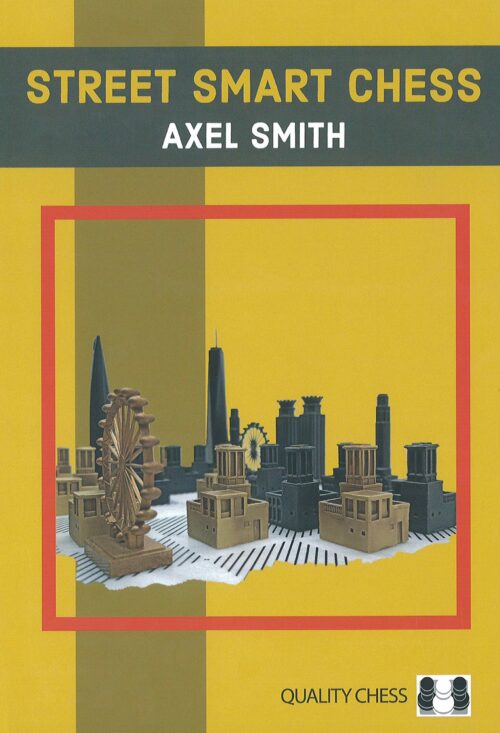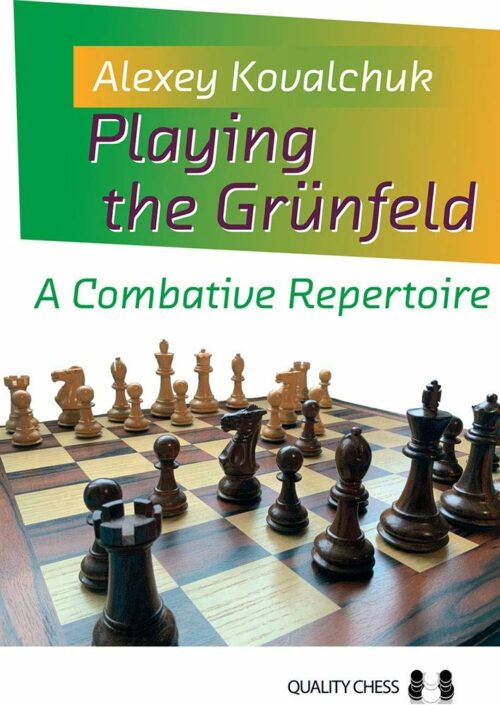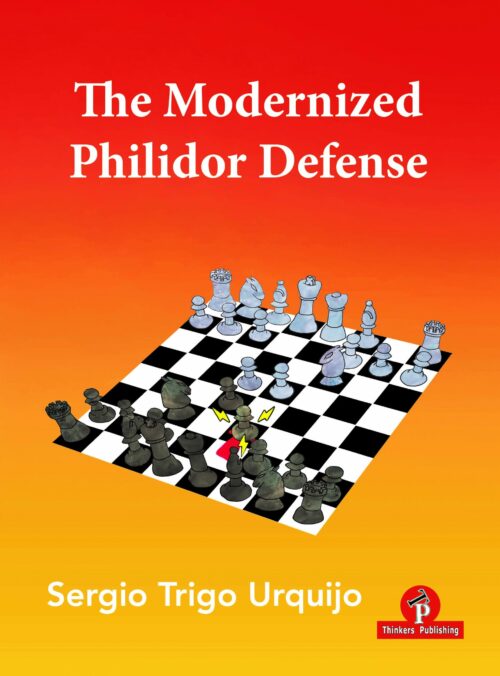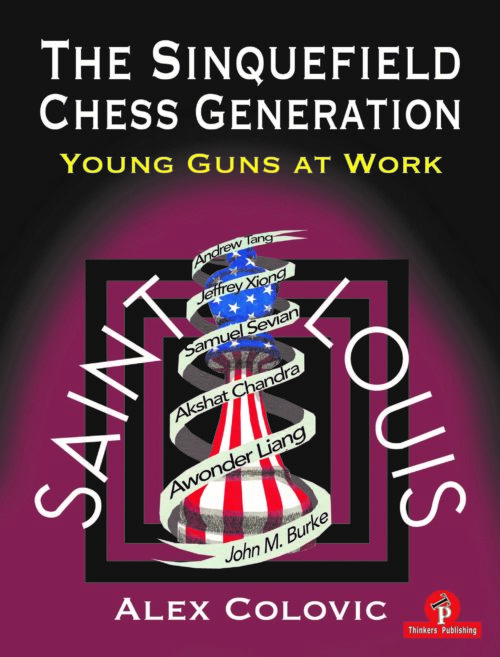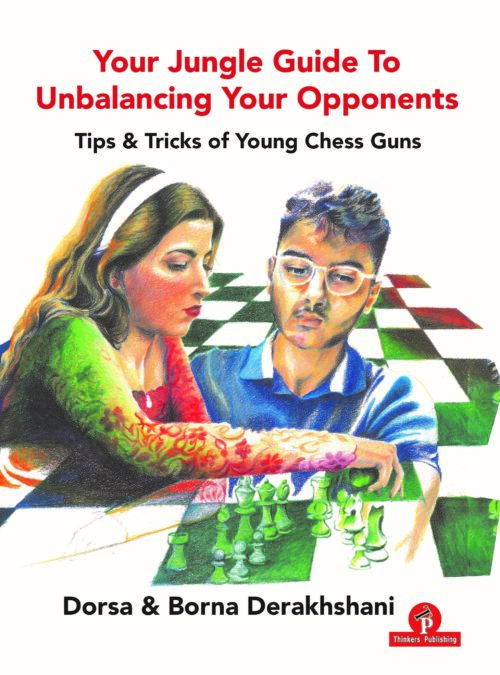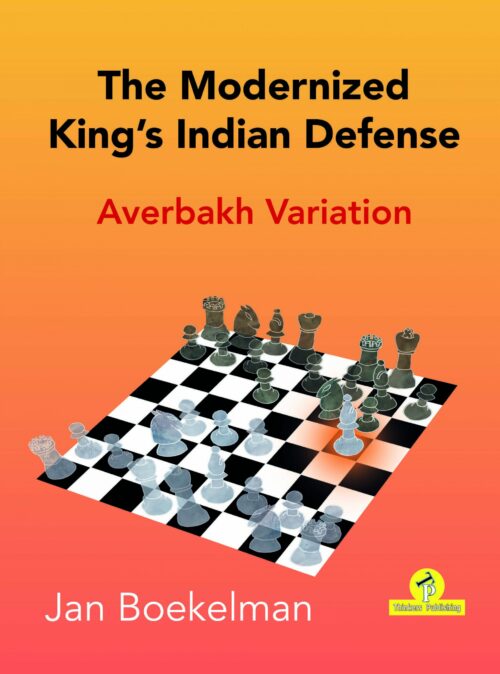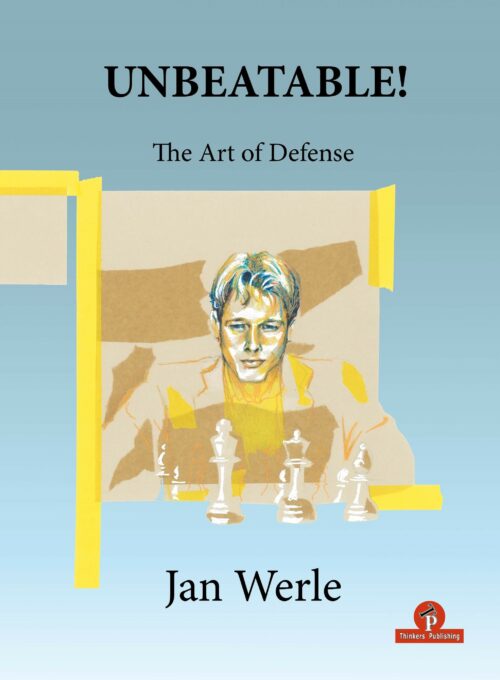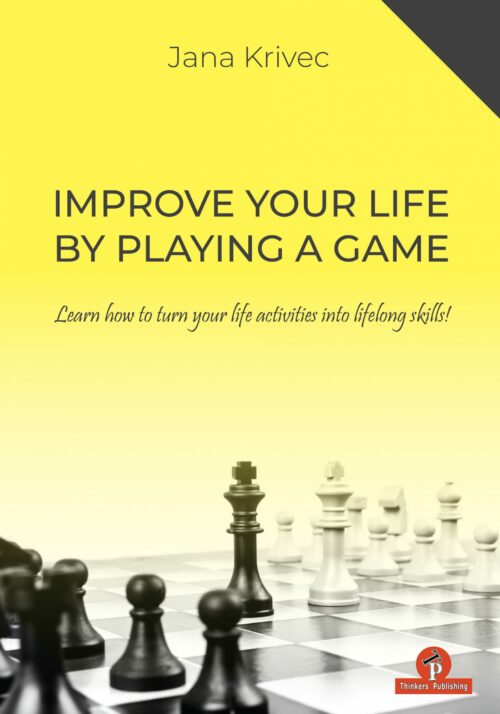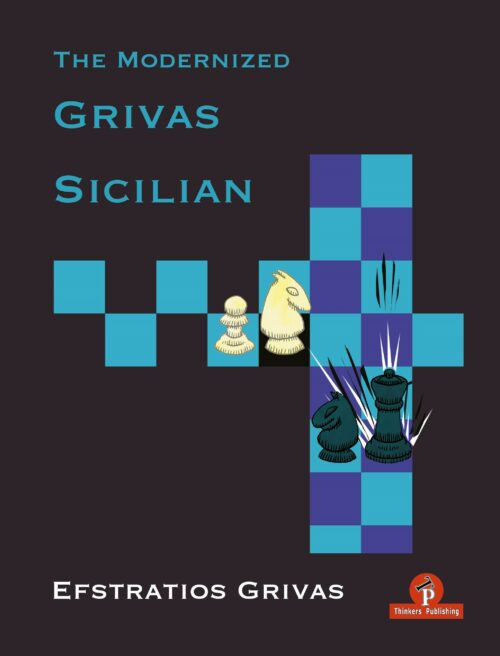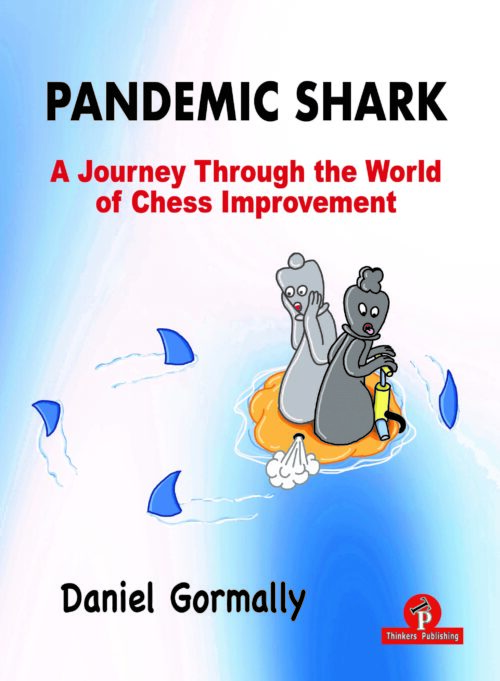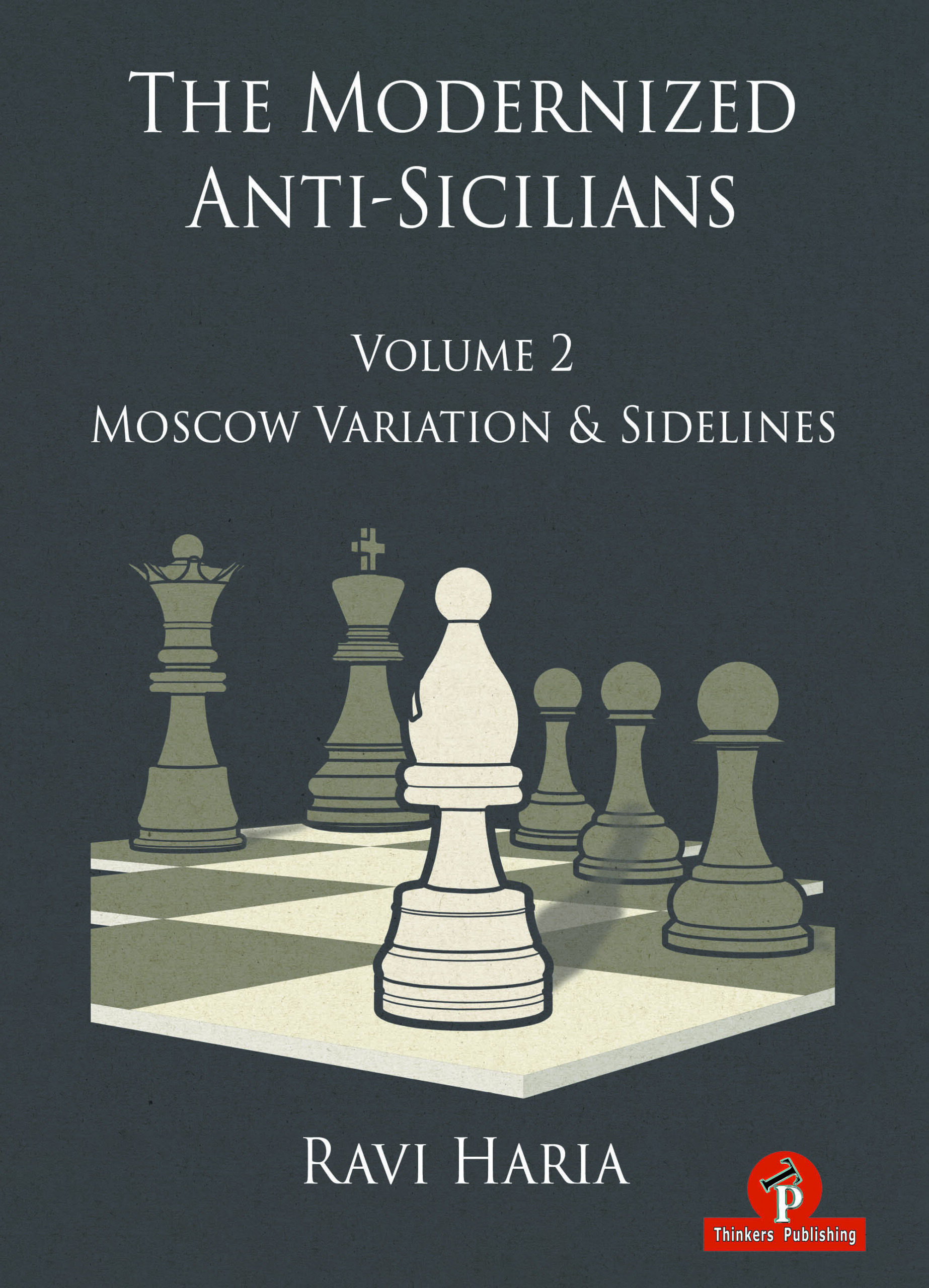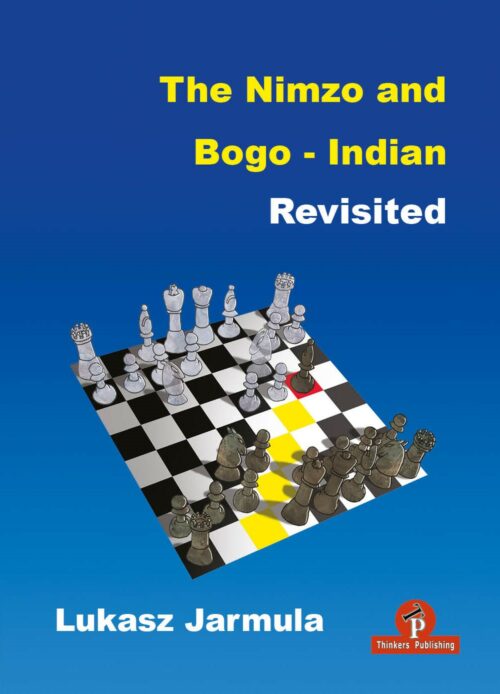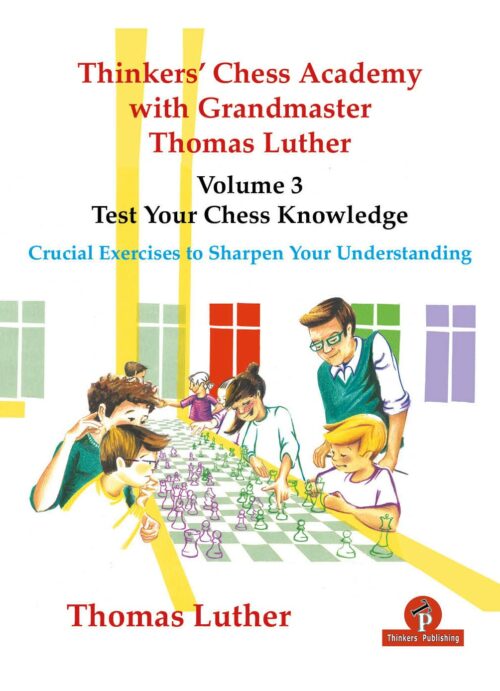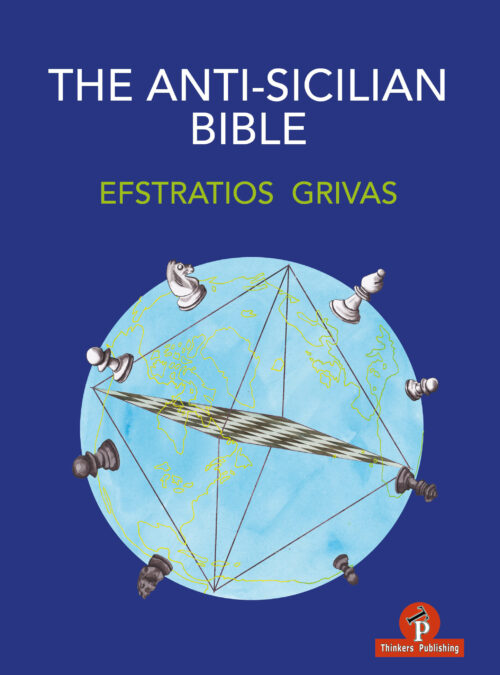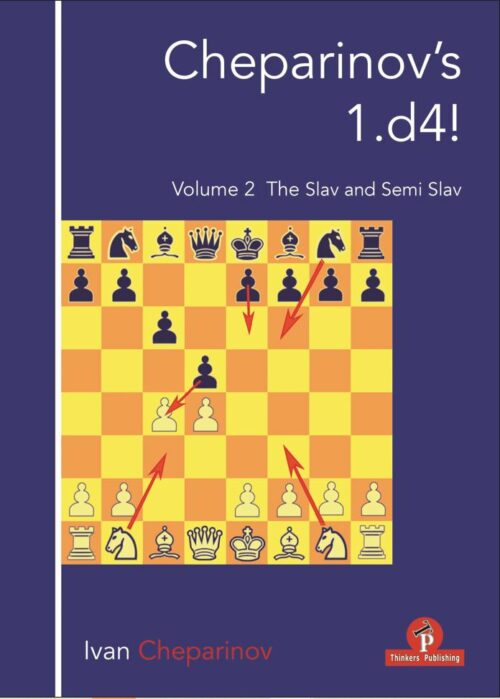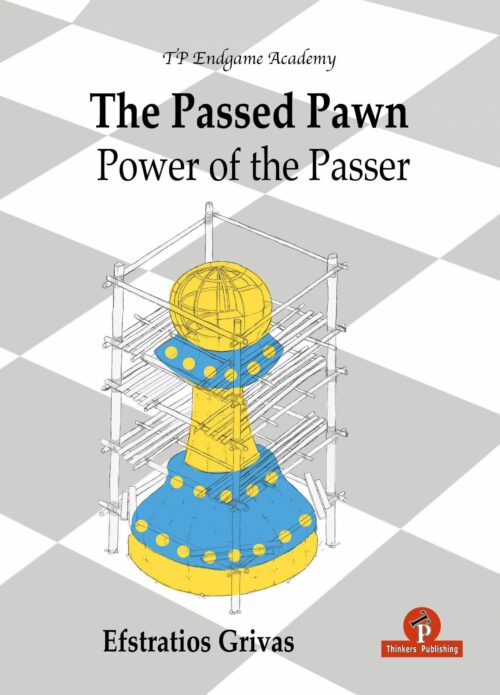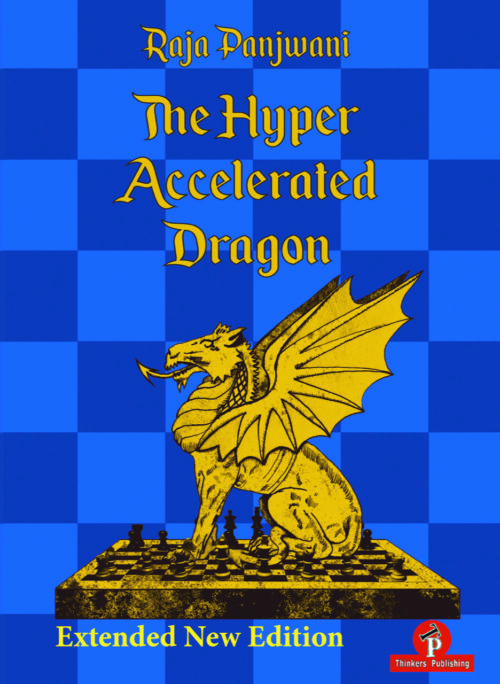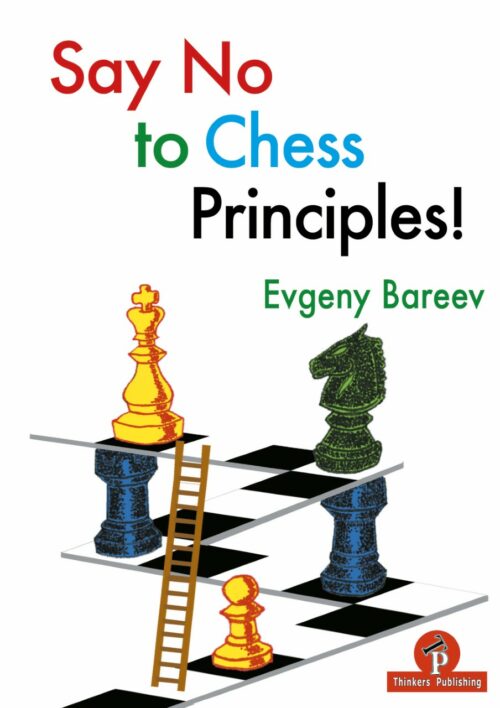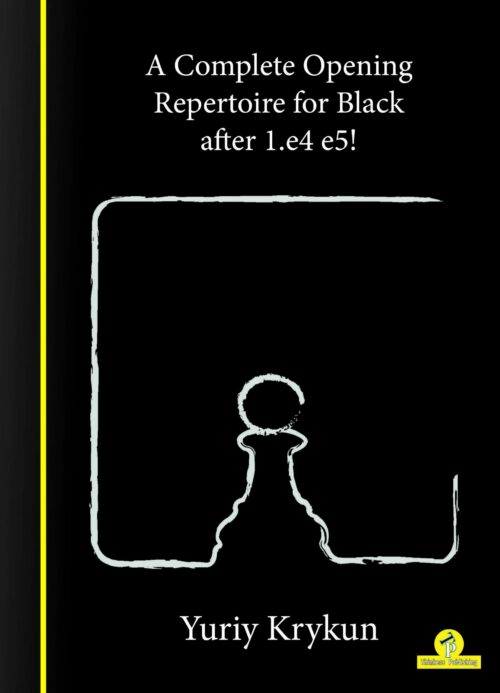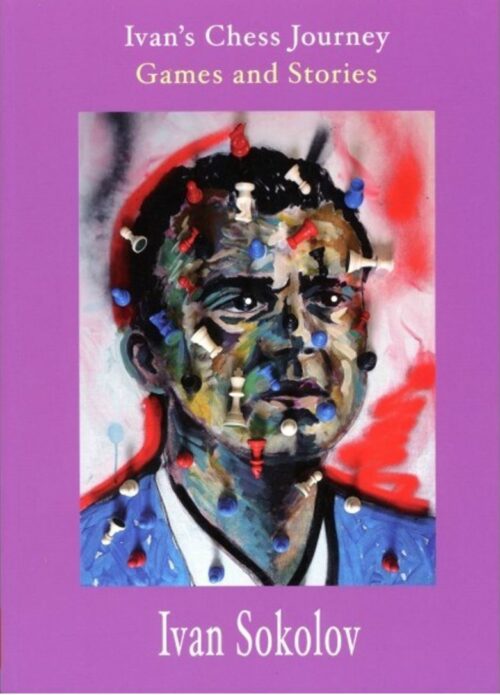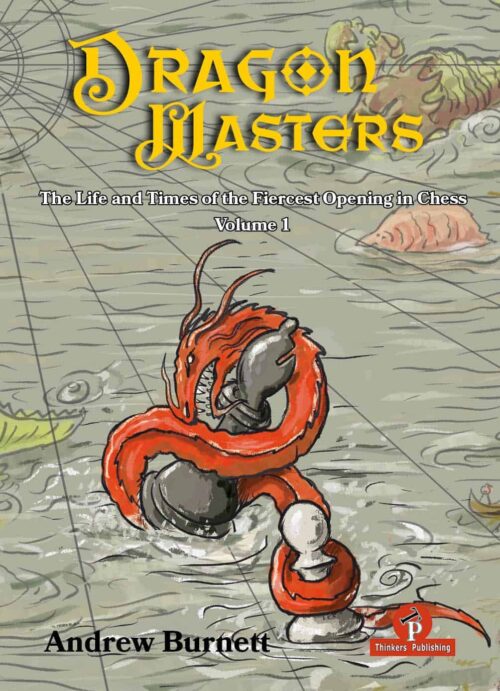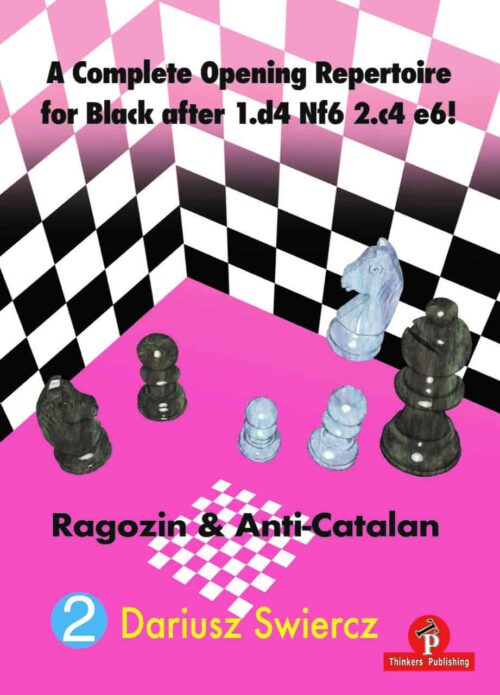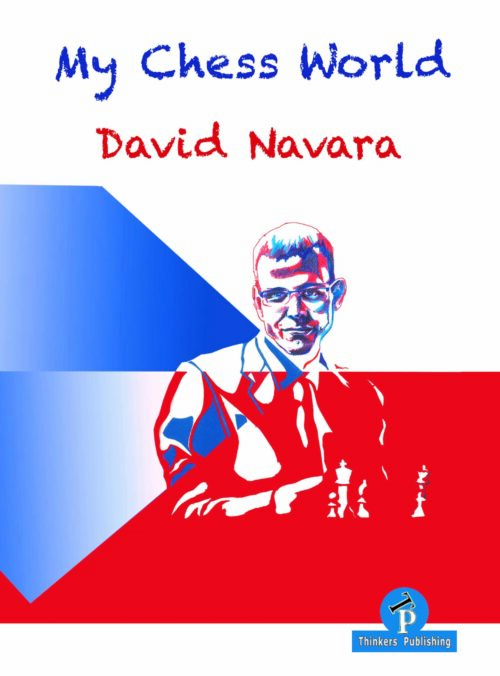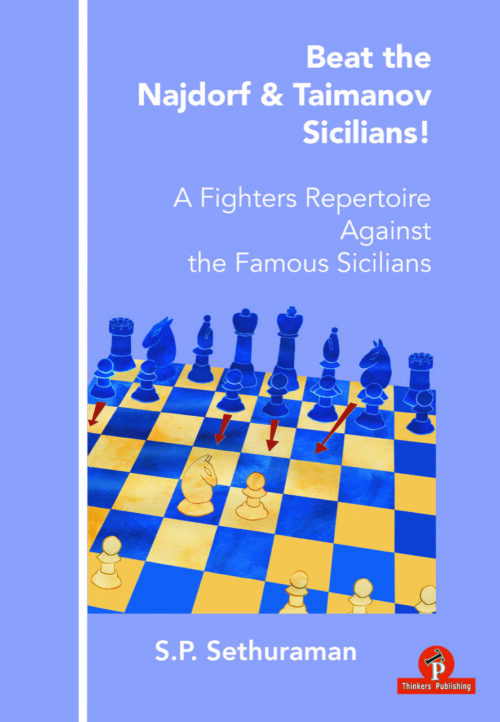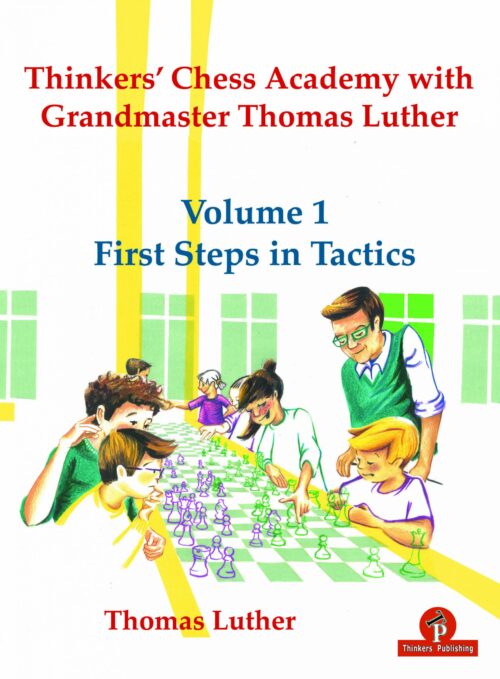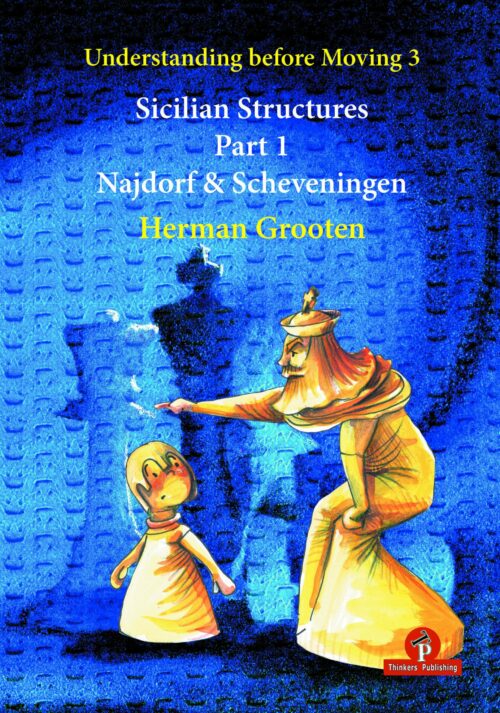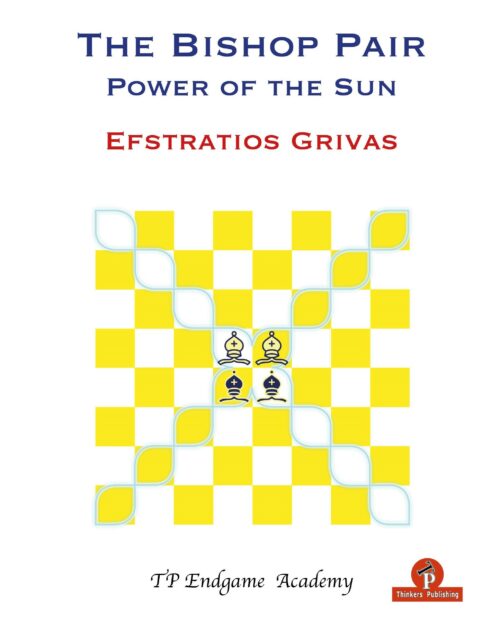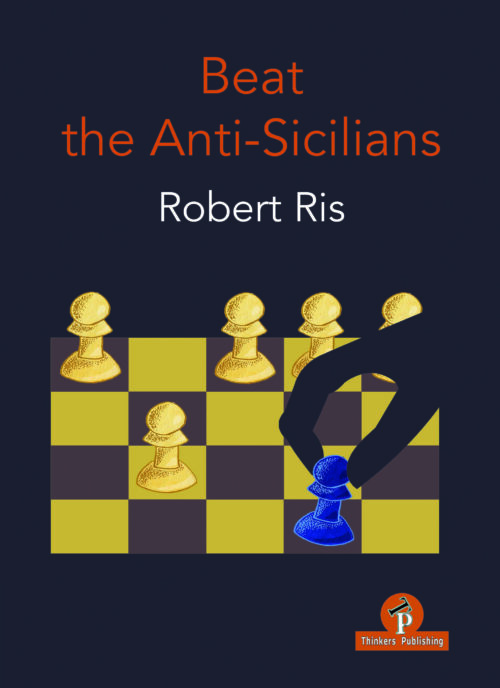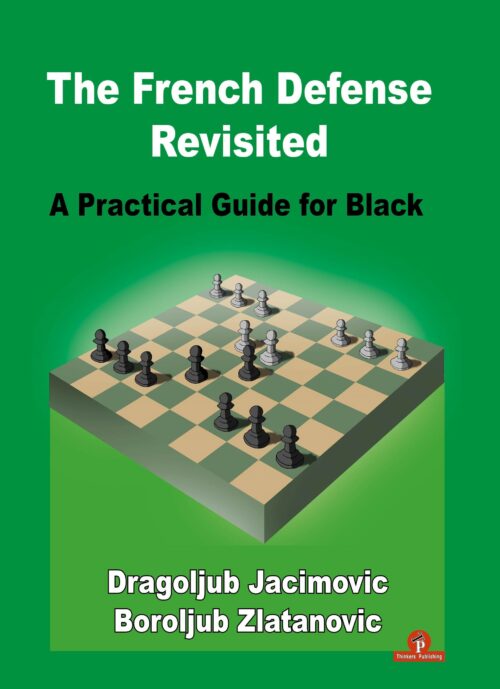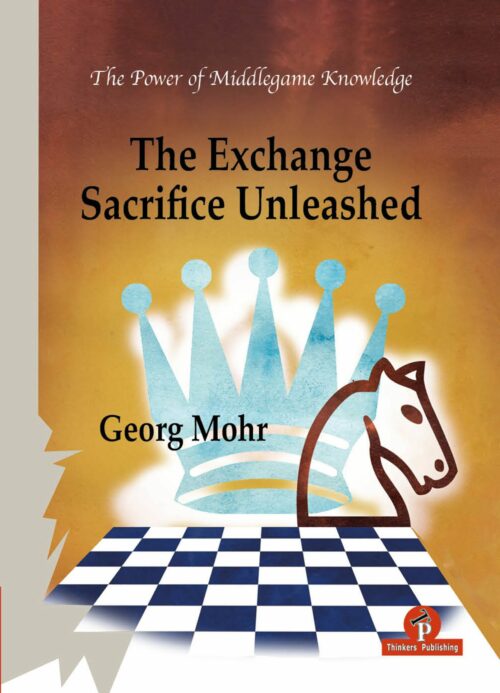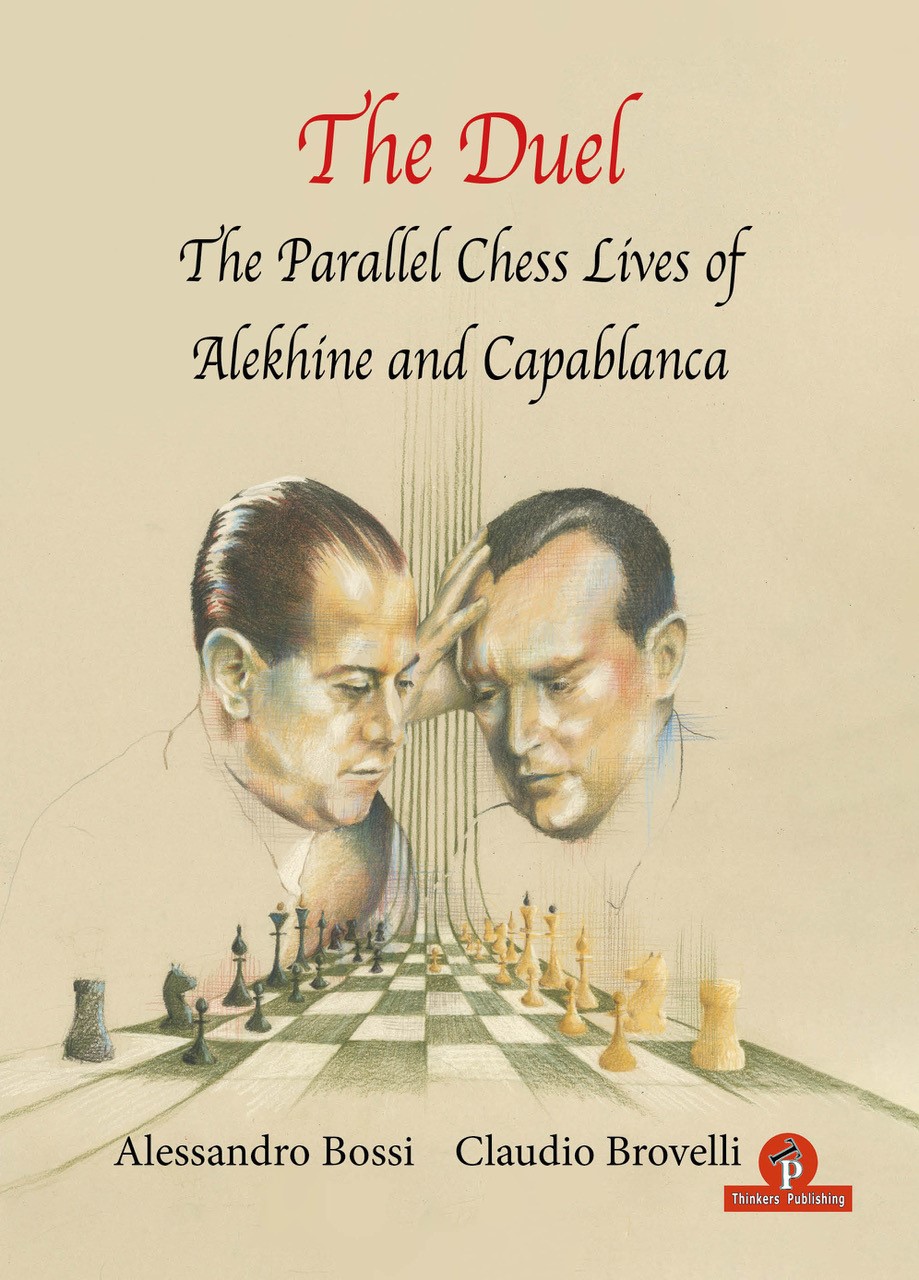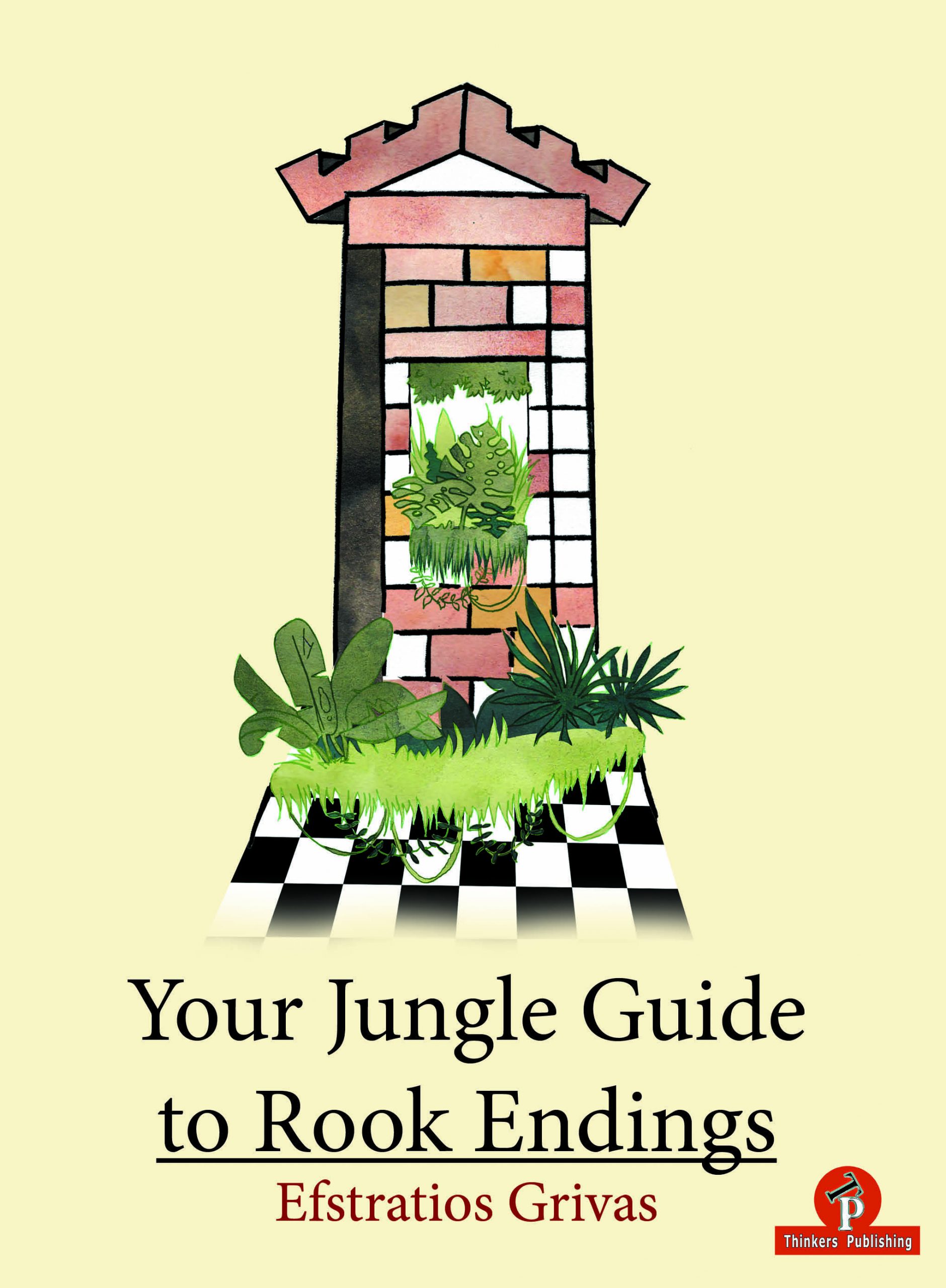-
Á útsölu!The positions arising from the Open Spanish contain ideas so different from the usual Ruy Lopez that I sometimes wonder whether it should really be considered part of it at all. It is an open game with unbalanced structures and sharp play but compared to the Sicilian, for instance, for which the previous description would also apply, there is an important difference; there is a certain degree of stability and solidity in the Open Spanish which distinguishes it from the sharper realms of the Sicilian and puts this line in its own unique category of opening ideas.
-
Á útsölu!“Over time, my attention focused on the Modern Benoni. In this opening, the bishop on g7 is the same icon that is the basis of the King’s Indian, but here it can operate on the whole a1-h8 diagonal instead of being locked in by its own pawn on e5, as usually happens in the King’s Indian. Black’s plan is outrageously simple: with pawns on d6 and c5, and sometimes b4, he creates a breakwater that opens up space for his favorite on g7.” ~ Alexey Kovalchuk
-
Á útsölu!“It just takes some time to become familiar with all the possibilities and ensuing middlegames. But once you finally master the isolated pawn structure, it will serve you well and equip you with a wide selection of tools with which you can outplay your opponent” ~ David Miedema
-
Á útsölu!“Usually in the Ruy Lopez Black is looking for long, slow games in solid, closed positions. The Marshall flips this on its head and Black tries to accelerate the play and radically change the character of the game at an early stage.” ~ Milos Pavlovic
-
Á útsölu!“Together With Mamedyarov” is not a collection of his selected games but it is primarily a study-book. It contains test positions taken from games of the famous Azeri grandmaster with detailed comments on the solutions to the tasks. In this book the solutions have been placed right after a diagram with a test except for the six positions given as a warm-up in the beginning of the chapter one. For those of you who work without the assistance of a coach would recommend that you cover the answer with a sheet of paper to avoid spoiling the benefit of solving the problem.
-
Á útsölu!“In my opinion, the Delayed Benoni is a kind of mystery for White also, since it has not been covered deeply enough in chess publications. So I think that this work could be useful for White players, too.” ~ Ivan Ivanisevic
-
Á útsölu!“Credit can mostly be given to Kasparov for reviving this old opening, but there are many others who have contributed to exploring new ideas and forging new paths. A lot of discoveries have been made by some young grandmasters who don’t shy away from analysing deep tactical solutions with the aid of the silicon beast.” ~ Milos Pavlovic
-
Á útsölu!“This book is about the greatest chess players who ever lived, who dominated their era and were looked upon as World Champions even at a time when this term, this very concept, did not yet exist.” ~ Paul van der Sterren
-
Á útsölu!If he thinks an idea will work over the board, the notion of risk is irrelevant to him. He wants to be on the attack and believes an objectively inferior position isn’t necessarily bad if his opponent needs to find several difficult defensive moves. “If that’s the only move for my opponent, let’s enter the line and see if he sees it!” is his philosophy.” ~ Romain Edouard
-
Á útsölu!“Contrary to what critical pessimists might say, the Reti opening is an ambitious weapon for White. By avoiding the main theoretical debates, White tries to reach an unbalanced position from an early stage of the game, with many different plans available.” ~ Adrien Demuth
-
Á útsölu!“Learning the Najdorf will help all players to understand Sicilians in a better way. Different aspects of chess such as defence, attack and sacrifice, positional themes and tactical storms, can be found in this book.” ~ Milos Pavlovic
-
Á útsölu!Nýr titill! Biblía Philidor skákmannsins. Virkilega vel unnin bók sem hefur fengið mikið lof. Óhætt að mæla með þessari. “Pawns are the soul of chess.” We have all heard this phrase more than once in our chess life and we owe it to the great French player François-André Danican, so-called Philidor, considered one of the best chess players of the 18th century.
-
Á útsölu!In his new endgame series, Boroljub Zlatanovic shows a profound understanding of the most common material imbalance in chess: that of the bishop against the knight. The didactic concept of the book is admirable as well as the detailed explanations of the typical characteristics of this endgame. Despite the importance of this subject, it has received very little detailed coverage in chess literature and this encyclopedic work will definitely fill this gap and offer a lot of useful tips for practical play. ~ Alexander Delchev
-
Á útsölu!
- Black is forced to make an immediate decision on move 3 and wait for the right moment to open the position.
- On top the author created practical difficulties for the Black. Naturally, it is not possible to find an advantage in every variation but Ravi added many detailed explanations to guide plans and aid understanding in the various positions White encounters.
- Ravi’s analysis makes Black’s path to equality extremely narrow.
- Finally, it was important to also consider the less popular second moves (2…g6, 2…a6, and 2…Nf6). In particular, both 3.c3 and 3.c4 against 2…g6 were examined.
- The latter transposes to an Accelerated Dragon, which the author can justify including in an Anti-Sicilian book as he believe it’s correct to enter an ‘Open-Sicilian’ type position if it benefits anyone. This approach has been emphasized across both volumes and it is made especially clear in the chapter against 2…g6.
-
Á útsölu!
- The spirit of Indian Defenses is based on flexibility and harmony.
- Most of the lines are positional, not tactical in character.
- While playing Black, you have to accept that occasionally you will not equalize, or get surprised or out-prepared.
- Learning the material from this book should sharply limit the extent of such instances, thus improving your overall results.
- Finally, we have an important piece of advice: remember about color strategy!
- The Bogo-Indian is mainly based on dark-squared control, while the Nimzo-Indian does so on the light squares. In case you forget what to do, this may prove a very useful guideline when choosing a move.
-
Á útsölu!Not every reader is ambitious enough or has enough time to work very hard on his chess. That’s quite understandable and nothing to be ashamed of. You can enjoy chess very well without being a strong tournament player. You could just entertain yourself by playing through interesting combinations. In this case don’t try too hard to solve the Advanced Lessons or Master Class exercises. Have a look to make yourself familiar with the position, than look at the solution and enjoy the surprising combinations. You won’t learn as much as you would by racking your brain to crack the hard nuts. But some knowledge and experience will certainly rub off and increase your understanding of chess. I hope this book will help you to work towards your goals and let have you fun with chess, Thomas Luther, September 2022
-
Á útsölu!Efstratios Grivas – The Anti-Sicilian Bible – A Complete Repertoire for Black – 520 pages. We must be trained not only in concrete opening moves but also on the middlegame, endgame, and tactical part of the opening. And this is exactly what this book offers: a complete structural think-tank on the non-open form of the Sicilian Defense.
-
Á útsölu!The Slav encompasses a wide but solid body of theory. Black has plenty of options and finding advantages and practical chances was not easy at all. In any case. From amateurs to very strong players, I believe that every chess player will appreciate this book.
-
Á útsölu!“A passed pawn must be blockaded, so as to have its power restrained as much as possible. The minor pieces (knight or bishop) are ideal for this purpose, as they can rarely be forced to retreat by enemy action. On the other hand, the major pieces (queen and rook) find it difficult to achieve a stable blockade as is easy to harass them, while one must also consider that, for such valuable pieces, dealing with a mere pawn cannot be an efficient form of employment. Taking the above into account, it becomes clear that the side with the passed pawn should seek to exchange minor pieces and retain the major ones; the opposite applies to the defending side.”
-
Á útsölu!The Hyper Accelerated Dragon is recommended for all players that are eager to enter critical lines in this exciting Sicilian Opening!
-
Á útsölu!“A lot of the topics listed demand a very straightforward type of thinking or approach. However it also happens that chess players often discover significant resources which formally exist outside the typical rules of chess. Those who know how to break all the rules and work around those specific guidelines reach the very top.” ~ Evgeny Bareev
-
Á útsölu!“1.e4 e5 is not just an opening. It is repertoire that represents our game as a whole. It is something players of all styles will enjoy due to the countless possibilities 1…e5 provides. Hopefully, learning 1…e5 will also make you a better player” ~ Yuriy Krykun
-
Á útsölu!Ivan Sokolov was one of the most furious attacking and creative players of his time. The author presents an overview of is his Life in Chess, full of entertaining unpublished material. He is not shy to share his opinions and promises the reader a personal roller coaster loaded with fun stories and unexpected twists. We are convinced you will enjoy the ride!
-
Á útsölu!DragonMasters volume 1 charts the history of the most exiting and dangerous opening known to chess – the Dragon Variation of the Sicilian Defense. Unlike almost all other books on the Dragon, the focus is not purely on theoretical development. Instead, the author has combined the mist historically important games, the famous players who chose to fight either side (sometimes both sides!) of the opening, and the moist unexpected and interesting stories featuring the Dragon. World Champions, contenders of the crown, code-breakers, revolutionaries in every sense of the world – all feature in this remarkable and entirely unique look into the history of an opening variation. as the ancient may say: Here be Dragons!
-
Á útsölu!
- A repertoire for Black providing all answers to White’s options.
- Paced with exciting games, original ideas and analysis.
- Thorough and up-to-date coverage of one of the most topical openings.
- Positionally motivated lines, but none the less never forgetting the needed dynamics.
- Aggressive ideas to tackle head-on white’s solid set-ups.
-
Á útsölu!“This book is not a pure (auto)biography, rather a games collection. It consists mainly of interesting high-class games played by me, including many losses. Most of the games are preceded by accompanying texts, which vary from essays to tournament reports. The title of the book might seem presumptuous, but I wanted to show how I see or experience the competitions without denying the chess worlds of others. While the texts are mostly light and subjective, at the same time I tried hard to stick to the facts and provide some food for thought.” ~ David Navara
-
Á útsölu!Endgame theory teaches us two fundamental issues: First, how to extract the maximum from a basic theoretical position with little material, where the experts (from practice comprising thousands of games) have reached definite conclusions. Second, the way in which we can handle an endgame, depending on the material remaining on the board, and the ideas and plans we should employ. The purpose of this series is to introduce the reader to advanced training concepts, using the same methods of presentation and instruction that were taught to great players by famous trainers that they have worked with. The series will start with the topic of “the Bishop Pair” and we will examine how to handle this “power of the sun” coupling.
-
Á útsölu!When I decided to write The Modernized Sveshnikov (June 2020) I knew that I was basically committing myself to covering the Anti–Sicilians in a separate book as well. After all, what’s a book on the Sveshnikov alone worth when your opponents decide to avoid the Open Sicilian? Especially since the Sveshnikov is nowadays considered to be one of the most reliable options for Black in the Sicilian, White players have been investigating new territories within the Anti–Sicilians. The book you are holding in your hands, Beat the Anti–Sicilians, aims to provide a complete Black repertoire against all the critical sidelines after 1.e4 c5. The biggest part of the book covers the Rossolimo and Alapin, but also the popular lines at club player’s level like the Grand Prix Attack and the Morra Gambit, and other alternatives on White’s 2nd move are also worked out in detail.
-
Á útsölu!The French Defense looks to be inexhaustible and there cannot be enough books dedicated to it. This book takes a step in the direction of revitalizing our favorite opening! The authors have decided to set the book in order from the less to the more popular and complex lines.In the case of the most popular moves 3. e5, Nd2 and 3. Nc3, we decided to offer two options for Black – one aims to lead to calm play, taking care first with finding balance and equalizing. Needless to say, we wish to arm the reader in all scenarios that can arise in a game of chess, depending on their intentions, wishes, preparation, motivation level, standings et
-
Á útsölu!• Compensation is a chess concept that we only fully understand when we enter the world of serious chess. • The relative value of pieces is perhaps the most difficult chess concept of all to explain. • It is one that every player must feel and believe in and can only be accepted with the help of our own practice, and when we feel it come together as though a part of us. • Why so much talk about such or similar sacrifices? Quite simply because we are afraid! We have been taught, and practice shows and proves the clear fact, that the closer we get to the last part of the game, the ending, the more pronounced a material advantage becomes. • If in the middlegame we can still hope for sudden turns, for the influence of other pieces, this is negligible in the endgame. • Maybe less so with tactical sacrifices, where we immediately see what the sacrificer gets in return. • How can we not accept the rook that the opponent offers us, when there is nothing concrete to see? One or two weaknesses perhaps, but they can be eliminated, and the material advantage and a secure victory in the endgame remains.
-
Á útsölu!I am convinced that to cultivate the memory of the past and to study the classics is always useful and worthwhile, not least because it enables us to understand and face with greater awareness the facts and the problems of the present time. Much has already been written about the giants who have preceded us, and in particular, the Cuban, José Raúl Capablanca, and the Russo-Frenchman, Alexander Alekhine, but a new approach can surely offer different and interesting perspectives. In The Duel, Alessandro Bossi and Claudio Brovelli go deep into the lives of these two legendary World Champions, who have left their mark in an unforgettable manner on their epoch (the first forty years of the 20th century) and who remain – in part, due to their very different personalities and relationship with the game – inimitable examples for all the chess-playing generations to come. The choice to present in parallel the two biographies (in my opinion quite rightly so), shows clearly and effectively similarities and differences, not only in the style of play, but also in the approaches to life of the two protagonists. With very precise historical descriptions and presenting the events in chronological order, the authors accompany us on a journey alongside the lives of these two legends of chess. In this fashion the personalities emerge, in many ways antithetical but equally fascinating: Capablanca, friendly and charming in society, precocious, genial and nearly invincible on the chessboard, and Alekhine, who combined a wonderful talent with a capacity for work, a competitive attitude and an energy which was truly enviable. Alekhine was rational and focused in pursuing his objective to supersede his rival. The Cuban champion represented for the younger Russian player a reference and a model – firstly, to be studied from a critical and highly penetrating perspective and then to be surpassed and beaten. The fact that, after wrestling the world title from him in the year 1927, Alekhine had always refused Capablanca . The Duel, the chance of revenge will always remain a cause of regret for chess fans, but it also demonstrates that the new World Champion was fully aware of having performed a feat that was perhaps not repeatable. The many masterpieces that both of them created on the chess board, which constitute for the public their most important legacy, enrich this volume and underline key moments of their respective careers. The games are analyzed well by the authors, who enlighten the reader as to how the diverse conceptualization and the different styles of the “duelists” (the more strategic and positional of Capablanca’s versus the more aggressive and combinative of Alekhine’s) are instructive and entertaining even nowadays, for all those who love chess and who wish to improve their understanding of it. The value of this volume lies also in the parts where Bossi and Brovelli, with painstaking accuracy, have quoted both direct impressions of the two protagonists (interviews, articles, letters and quotations from their works) and evaluations (in the comments and memories of their contemporaries). In such a way, a contest of wider significance is described, which helps in understanding the characters, the period and the specific contexts. Among the witnesses emerges, in particular, Esteban Canal, the great champion of Peruvian origin who spent much of his time in Italy. He had the privilege of fighting with both Capablanca and Alekhine and becoming acquainted, if not a friend, with them. One of the authors, Alessandro Bossi, was lucky enough to come to know Canal personally and to hear directly from him of the many episodes and anecdotes described in this book. Enjoy your reading! GM Michele Godena, March 2022
-
Á útsölu!“The endgame is the moment of truth. It is the phase of the game where we will try to reap the seeds of our effort regardless of whether that is the full point of victory or the half point of the draw. The significance of errors increases in the endgame as the opportunities for correcting them are few.” ~ Efstratios Grivas

